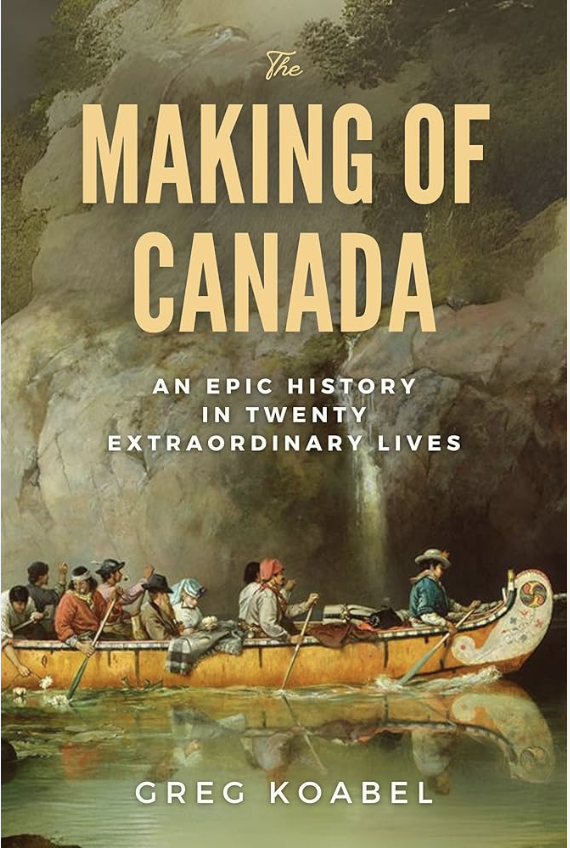The Making of Canada by Greg Koabel
2025, Sutherland House Books, 327 Pages, $37.95
Canadian History
I really enjoyed this book. As the title suggests, it talks about the making of Canada, up until 1867. The chapters focus typically on one or two specific historical characters or events and how they encapsulate a trend or event in pre-Confederation Canada. The chapters are all self-sustained, so other than my own demand of chronological order, there’s no reason why you would have to go through the book from Chapter 1 to Chapter 20 in that order. You could start on 14 and skip to 20 if you’re interested in the Irish question in Ontario, for example.
Much of the content has already been discussed on Koabel’s podcast, and you can’t avoid the comparison between the book and the podcast. It’ s the same subject matter, and the self-contained chapters are like episodes, running typically 15-20 pages long. This makes it a really good “cottage book”, in that you can pick it up anywhere, whenever you have a half-hour free.
My favorite chapters were Chapter 1 (John Cabot and William Weston), 4 (The Le Moyne Brothers), 5 (Kondiaronk and the Great Peace of Montreal, and 17 (Mary Ann Shadd). One of the reasons that Koebel stands out as a narrative historian is that he insists on putting multi-culturalism as a sine qua non feature of Canada from the very beginning. Rather than the tired narrative of “first there were Indians, then French, then British” Koebel puts front and centre the fact that indigenous people didn’t disappear, the French were not confined to the back-woods of Quebec, and that Scandinavians, Basques, Spanish, Irish, Russians, Germans, Ukrainians, Jews, and Africans have been here for a very long time and cannot be simply categorised away as new immigrants. There is an underlying thesis that Canada has never been a cultural monolith, regardless of the changing hegemonies that have come and gone.
Removing that grand narrative, the strength of the book is on the petty narratives, of using the lives of grand individuals to illustrate the greater phenomena of the world that they inhabit. It’s a good read, it’s fun, it’s intellectually satisfying. It’s exactly what I was looking for.
★★★★★
